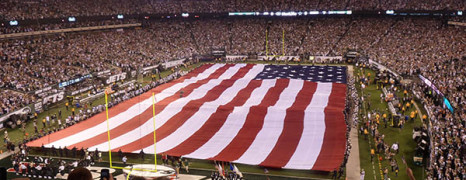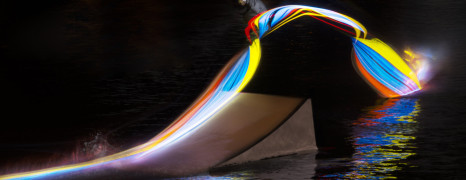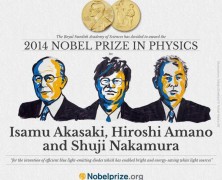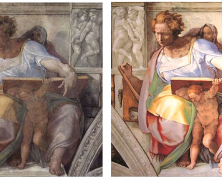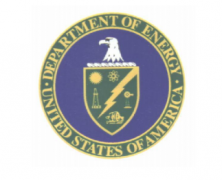When the Seattle Seahawks face off against the New England Partiots at this upcoming Super Bowl, LED stadium lighting will illuminate the field. Scheduled for Feb. 1st, the game will be the first NFL championship match that has ever been lit with LED lights. The LED lights were installed last fall at University of Phoenix Stadium. The Arizona Cardinals and San Francisco 49ers were the first to play a game on Sept. 21st, 2014 under the new lighting system. The LED stadium lighting will significantly increase the light on the field and will produce a more vivid picture on the screen for the 110 million plus expected viewers of this year’s game. The light will shine in a more uniform manner than the legacy system, creating less shadows and a clearer view of the action taking place on the field. Another advantage of LED lighting is the fact that they don’t flicker, which will lead to less distractions during slow-motion replays. There will be 312 LED fixtures installed to replace the 780 metal halide lights. The new LED stadium lighting will use just 380,000 watts compared to the 1.24 million watts needed to power the old system. Combined with savings generated for lower air-conditioning costs, most venues that choose LED stadium lighting enjoy a 75% reduction in overall energy consumption. Further, the system will age more gracefully than metal halide lights, which take on a reddish hue and lose brightness over the years. The University of Phoenix Stadium was originally opened in 2006. With its innovative design that includes a retractable roof and field, it’s recognized as one of the most advanced stadiums in North America in terms of its engineering. This multi-purpose facility previously hosted Super Bowl XLII in 2008. It also hosts the annual Fiesta Bowl, and numerous international soccer matches. The stadium seats 63,400 fans, but is expandable to seat 72,200. Questions? This Super Bowl Sunday will be lit by LEDs? Just another reason that Flexfire LEDs is excited about being a part of the future of LED lighting! If you have any questions about LEDs, and specifically LED strip lighting, remotes, and dimmers, please stop by our website at flexfireleds.com or give us a call at 1-844-FLEXFIRE (1-844-353-9347) to talk with one of our design specialists...
Flexfire LEDs Featured in Red Bull Wakeboard Video
posted by Flexfire LEDs
Red Bull is well known for creating iconic, captivating events that promote an active, exciting lifestyle. A terrific example involved “painting with light” – using Flexfire LEDs to illuminate the actions of professional wakeboarders. Photographer Patrick Rochon shot three Red Bull wake riders at Orlando, Florida’s OWC Cable Park as part of a photography event called Snap! Orlando. In preparation for the shoot, producer Evan Jones outfitted the wakeboards with waterproof strip lights from Flexfire LEDs. The lights were part of an intricate marriage of technology and skill, with athletes and production crew eager to create something special for Red Bull’s Illume Image Quest. The Red Bull wakeboard video was a tremendous success, resulting in one of the most viral videos in company history. This behind-the-scenes video offers a great look at some of the challenges the team faced, and even shows them installing our strip lights onto the boards in preparation. And of course, there are some fantastic images of the “painted” wakeboarders in...
Wearable Blue LED Light Therapy To Treat Psoriasis Vulgaris...
posted by Flexfire LEDs
Philips has announced the release of a wearable device that uses blue LED light to manage mild to moderate cases of psoriasis vulgaris. The device, which will be available through distributors this month in Germany, Netherlands and the U.K., is called Philips BlueControl and will offer an effective form of treatment for the skin condition without requiring medication. Psoriasis is a skin condition that effects 125 million people across the planet. Of those suffering from the condition, 80% have the most common form, psoriasis vulgaris. Also known as plaque psoriasis, the condition causes plaques on the skin in the form of red raised skin and flakey “scales” that arise when the skin cells die. Symptoms of the condition include itching, pain and cracking. Needless to say, the physical and psychological effects can be debilitating for those patients suffering from this disease. While the precise causes of psoriasis are unknown, it’s generally accepted that the condition arises following damage to the immune system, enzymes and other materials, which leads to uncontrollable growth of keratinocytes (immature skin cells that produce keratin, a tough protein found in nails, hair and skin) that triggers the skin flakes and inflammation as the body works to rid itself of the growth. Existing treatments to reduce the symptoms of the condition include topical applications, prescription drugs and UV phototheraphy—a treatment which taxes patients and medical services by requiring frequent visits to doctors’ offices. Looking for a better way to treat this incurable condition, researchers have found simple LED blue light treatment slows rapid cell division and can also reduce inflammation, which are the root causes of psoriasis vulgarsis. Conducting clinical trials in Germany, Philips worked with researchers at the University Hospital of Aachen to investigate the safety and efficacy of the Philips BlueControl device to manage...
Invention of Blue LED Wins Nobel Prize...
posted by Flexfire LEDs
The Nobel Prize rewards an invention “of greatest benefit to mankind“, and this year, that distinction recognized LED lighting as an energy-efficient technology that will fundamentally change the way we see our planet. The Royal Swedish Academy of Sciences announced that three scientists were awarded the 2014 Nobel Prize in Physics for inventing the blue LED. Isamu Akasaki, Hiroshi Amano, and Shuji Nakamura were the first to generate blue LED light, a feat that had eluded scientists for decades. Green and red LED lights had long since already existed, but blue light was necessary to combine with green and red to generate white light, as seen below. Once blue LEDs were created, it allowed the commercial development of white LED lamps, which are now revolutionizing the lighting and energy sectors worldwide. It’s why we’re currently seeing a rapid transition to LEDs in everything from home and hotel illumination to massive infrastructural city lighting in places like London, Tokyo and New York. Interestingly, blue LEDs are also showing promise in the treatment of Alzheimer’s disease, and were even used to reverse paralysis in laboratory mice. Among many other benefits, LED lamps are often recognized as being extremely energy-efficient. This is mainly reflected in a lamp’s “lumens per watt” data, which indicates the amount of light generated (“lumens”) per watt of energy used. High quality LEDs are capable of generating upwards of 300 lumens per watt, vastly outperforming incandescent and fluorescent lighting sources (16 lumens/watt and 70 lumens/watt, respectively). Further, LEDs last 10 to 100 times longer than competing technologies, which allows for a dramatic reduction in waste and material consumption. LED light is seen as a bright beacon for those in the developing world, where access to electricity often comes at a premium. “The LED...
Sistine Chapel LEDs: A Masterpiece Of Fine Art Lighting...
posted by Flexfire LEDs
The Sistine Chapel ceiling frescoes are the world’s most recognized works of art by High Renaissance artist Michelangelo. Epic in scope, the frescoes, which depict scenes from the Book of Genesis, have been described as “an artistic vision without precedent,” and “a veritable beacon to our art, of inestimable benefit to all painters, restoring light to a world that for centuries had been plunged into darkness.” While Michelangelo’s works may have lit the way for untold numbers of artists who followed, until recently, inefficient, lifeless, and heat-generating halogen lamps were being used to light his masterpiece. Recognizing the potential for improvement, multinational lighting manufacturer Osram teamed with universities and private institutes to install a new LED lighting system for the Vatican masterpiece. The EU and private funders helped fund the installation, which was designed to address the shortcomings of the previous lighting system Installed in the 1980s, the original halogen lamps failed to highlight the full scope of colors used in the piece, while converting only 10% of the energy used into light (the other 90% was lost to heat generation). Combined with this high heat output, an increasing number of yearly visitors meant rising temperature concerns, which could potentially damage the work itself. For this new installation, 7,000 low-heat LEDs were specially adjusted to create the most natural, homogenous fine art lighting possible. The hue of each LED was individually adjusted until the results were precisely matched to the color pigments used 500 years ago by Michelangelo in the different sections of the massive work of art. According to Mourad Boulouednine, Osram’s regional head of projects, the Renaissance pigments required a different color rendering index than the ones made available the eight standard testing colors. After performing an optimization process by analyzing light coming from a particular spot on the piece, the...
$4 Billion DOE Loan Program Includes LED Lighting Projects...
posted by Flexfire LEDs
The U.S. Department of Energy (DOE) has announced a $4 billion loan guarantee program to lower greenhouse gas emissions in the United States. LED lighting projects will qualify for the program. To qualify for the loans, projects must meet one of the following requirements: renewable energy systems; efficient electrical generation, transmission and distribution technologies; or efficient end-use energy technology (LEDs qualify as an efficient end-use energy technology). Applicants should have a project that is market-ready, replicable and would not likely be fully financed on a long-term basis by commercial banks. The DOE loan program is primarily geared toward renewables. LEDs are increasingly being incorporated with renewable technologies such as solar energy, and are helping to make renewable technologies more viable. The efficiency and reduced costs of solar-powered LEDs means they have already started to outperform electrical grid wiring in applications such as road and bus shelter lighting all the way from Boston to Abu Dhabi. The primary opportunity for LED lighting in this federal loan guarantee program lies in its compliance with the efficient end-use category. LEDs use 80% less energy than standard incandescent lighting. Not only that, but the advanced programing capabilities and rapid “on/off” switching of LEDs lend themselves to home automation projects and use in intelligent lighting projects aimed to reduce energy usage. LEDs are more efficient than other light sources because the vast majority of energy they use is transferred into light rather than heat. With an estimated 17% of the total energy used in commercial and residential sectors in 2012 going to lighting, the potential for LED energy savings across the nation is enormous. Initial applications for the federal guaranteed loan programs are due October 1, 2014, along with a $50,000 fee for the first phase of the DOE loan guarantee...






